20,0007,000 Portuguese13,000 Franks ~15,000 | Dates 1 Jul 1147 – 24 Oct 1147 | |
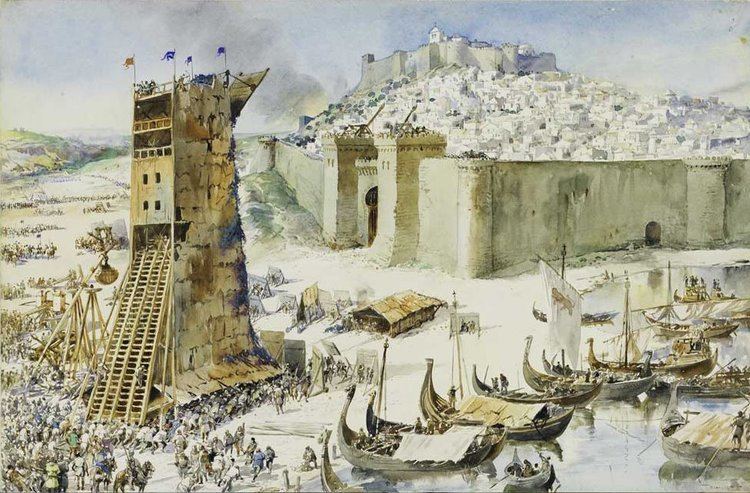 | ||
Result Decisive Portuguese-Crusader victory Similar Conquest of Santarém, Battle of Ourique, Second Crusade, Battle of Cutanda, Battle of Uclés | ||
Siege of lisbon 1147 a victory of the second crusade
The Siege of Lisbon, from July 1 to October 25, 1147, was the military action that brought the city of Lisbon under definitive Portuguese control and expelled its Moorish overlords. The Siege of Lisbon was one of the few Christian victories of the Second Crusade—it was "the only success of the universal operation undertaken by the pilgrim army," i.e., the Second Crusade, according to the near contemporary historian Helmold, though others have questioned whether it was really part of that crusade. It is seen as a pivotal battle of the wider Reconquista.
Contents
- Siege of lisbon 1147 a victory of the second crusade
- The siege of lisbon
- Second Crusade
- Redirected efforts
- Fall of Lisbon
- Aftermath
- References
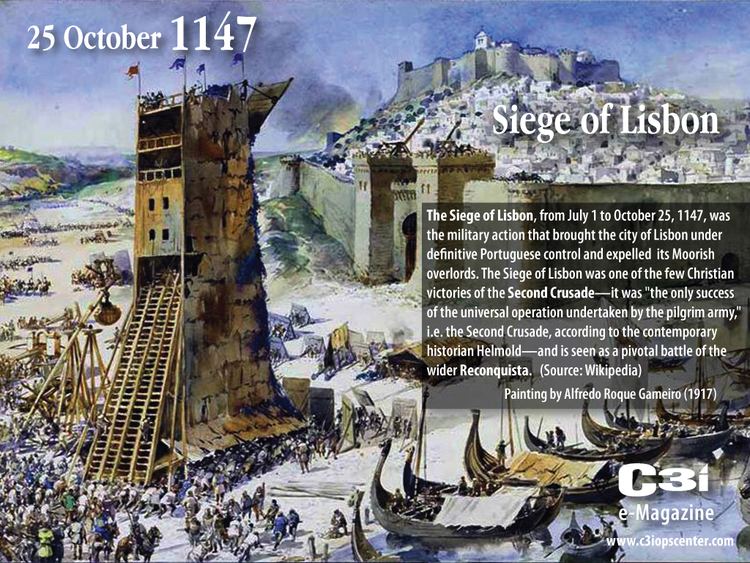
The Fall of Edessa in 1144 led to a call for a new crusade by Pope Eugene III in 1145 and 1146. In the spring of 1147, the Pope authorized the crusade in the Iberian peninsula. He also authorized Alfonso VII of León and Castile to equate his campaigns against the Moors with the rest of the Second Crusade. In May 1147, a contingent of crusaders left from Dartmouth in England. They had intended to sail directly to the Holy Land, but weather forced the ships to stop on the Portuguese coast, at the northern city of Porto on June 16, 1147. There they were convinced to meet with King Afonso I of Portugal.

The crusaders agreed to help the King attack Lisbon, with a solemn agreement that offered to the crusaders the pillage of the city's goods and the ransom money for expected prisoners. The siege began on July 1. After four months, the Moorish rulers agreed to surrender on October 24, primarily because of hunger within the city. Most of the crusaders settled in the newly captured city, but some of the crusaders set sail and continued to the Holy Land. Lisbon eventually became the capital city of the Kingdom of Portugal, in 1255.
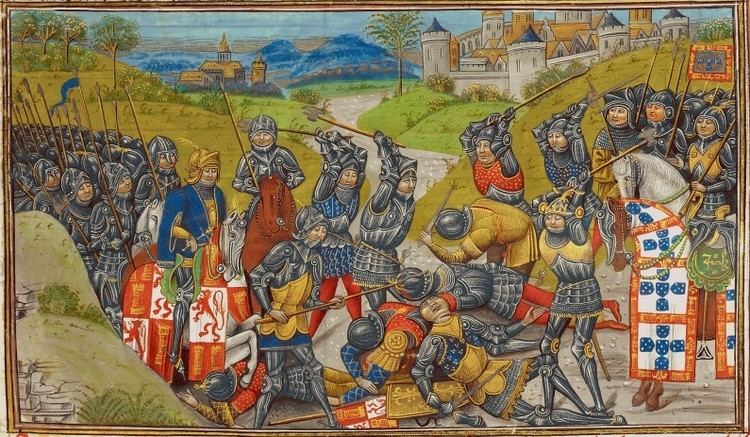
The siege of lisbon
Second Crusade
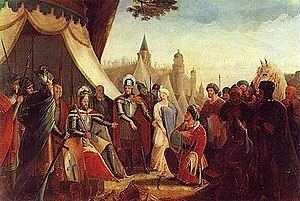
The traditional start of the Reconquista is identified with the defeat of the Muslims in the Battle of Covadonga in 722. After the First Crusade in 1095-1099, Pope Paschal II urged Iberian crusaders (Portuguese, Castilians, Leonese, Aragonese, and others) to remain at home, where their own warfare was considered just as worthy as that of crusaders travelling to Jerusalem.
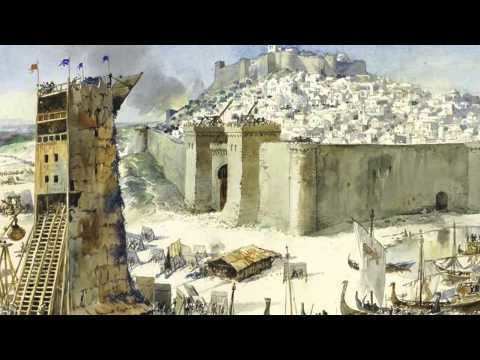
The Fall of Edessa in 1144 led to a call for a new crusade by Pope Eugene III in 1145 and 1146. In the spring of 1147, the Pope also authorized a crusade in the Iberian peninsula, where "the war against the Moors had been going on for hundreds of years." Pope Eugene encouraged Marseilles, Pisa, Genoa, and other Mediterranean cities to fight in Iberia. He also authorized Alfonso VII of León and Castile to equate his campaigns against the Moors with the rest of the Second Crusade.
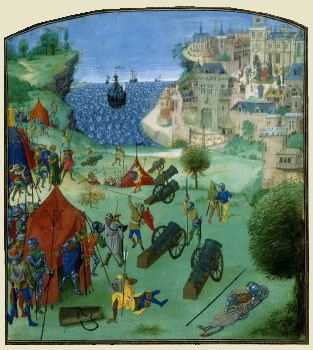
On May 19, 1147, a contingent of crusaders left from Dartmouth in England, consisting of crusaders from Flanders, Frisia, France, England, Scotland and some German polities who collectively considered themselves "Franks". No prince or king was in charge of the expedition, and its participants seem to have been largely made up of townsmen, who organised themselves using a sworn oath. Leadership was provided by Hervey de Glanvill, Constable of Suffolk. Other crusader captains included Arnout IV, Count of Aarschot leading the Rhinelanders, Christian of Gistel leading the Flemish and Boulogne forces, and the Anglo-Norman forces led by Simon of Dover, Andrew of London, and Saher of Archelle. Important decisions were made collectively by the commanders.
Redirected efforts
According to Odo of Deuil there were 164 ships bound for the Holy Land, and there may have been as many as 200 by the time they reached the Iberian shore. Bad weather forced the ships to stop on the Portuguese coast, at the northern city of Porto on June 16, 1147. There they were convinced by the bishop, Pedro II Pitões, to meet with King Afonso of Portugal. The king, who had reached the Tagus River and conquered Santarém on 15 March, had also been negotiating with the pope for the recognition of his title of King. He was notified of the arrival of a first party and hastened to meet them.
The undisciplined multi-national group agreed to help him there, with a solemn agreement that offered to the crusaders the pillage of the city's goods and the ransom money for expected prisoners. For the city, "they shall have it and hold it until it has been searched and despoiled, both of prisoners for ransom and of everything else. Then, when it has been as thoroughly searched as they wish, they shall turn it over to me..." Afonso promised to divide the conquered territories as fiefs among the leaders. He reserved the power of advocatus and released those who were at the siege and their heirs trading in Portugal from the commercial tax called the pedicata.
The English crusaders were at first unenthusiastic at this change of plan, but Hervey de Glanville convinced them to participate. Hostages were exchanged as sureties for the oaths.
Fall of Lisbon
The siege began on July 1. The Christians soon captured the surrounding territories and besieged the walls of Lisbon itself. After four months, the Moorish rulers agreed to surrender (October 21), because the Crusaders' siege tower reached their wall (thus causing a one-day standstill) and because of hunger within the city, which was sheltering populations displaced from Santarém as well as "the leading citizens of Sintra, Almada, and Palmela."
After a brief riotous insurrection the Anglo-Norman chronicler attributes to "the men of Cologne and the Flemings", the city was entered by the Christian conquerors, on October 25. The terms of the surrender indicated that the Muslim garrison of the city would be allowed to keep their lives and property, but as soon as the Christians entered the city these terms were broken. According to the De expugnatione Lyxbonensi,
Aftermath
Some of the crusaders set sail and continued to the Holy Land. However, most of the crusaders settled in the newly captured city, thus boosting the number of Christian supporters in Iberia. Gilbert of Hastings was elected bishop marking the beginning of the historic relationship between England and Portugal which would later form the Anglo-Portuguese Alliance. In spite of the contractual nature of the city's surrender, a legend arose that the Portuguese warrior and nobleman, Martim Moniz, sacrificed himself in order to keep the city doors open to the conquering Christian armies.
Lisbon eventually became the capital city of the Kingdom of Portugal in 1255. The victory was a turning-point in the history of Portugal and the wider Reconquista, which would be completed in 1492.
